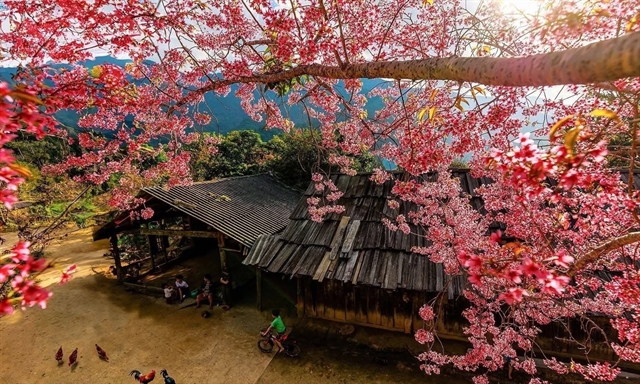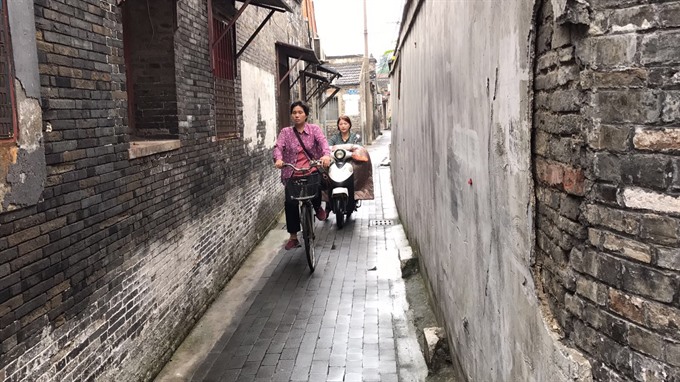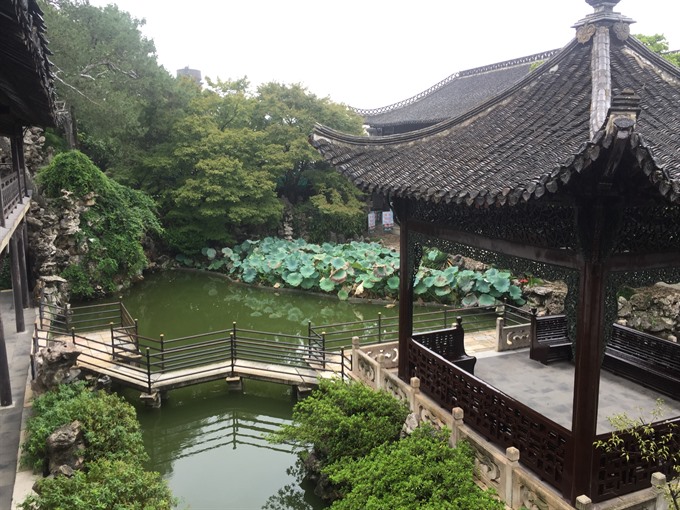 Travel
Travel

Yangzhou city on the southern bank of China’s Yangtze river, the longest river in Asia, is home to many historical sites. The city, once a political, economic and cultural hub during the Ming and Qing dynasties, is one of the largest and best-preserved ancient cities in eastern China.
 |
| Wide enough for two: An alley in Dingjiawan Street. A peaceful life can be found in narrow alleys there. – VNS Photo Dambar Shrestha |
by Khánh Dương
Yangzhou, located on the south bank of China’s Yangtze river, the longest river in Asia, is home to many historical sites. The city, once a political, economic and cultural hub in the Ming and Qing dynasties, is one of the largest and best-preserved cities in eastern China.
Yangzhou is like an elderly woman. It provides tourists with a gentle, fresh and tranquil feeling. It was raining in the morning when I strolled through the ancient area. the city in the rain seemed more romantic, poetic and charming.
In the centre of tranquility is the Ho family garden, also known as Ji Xiao Mountain Villa, the best preserved private garden in the city. The national cultural relic consists of a unique residence in the south and a garden in the north. The buildings were constructed in Chinese style, but equipped with Western ornaments, such as French iron frames, glasses and Japanese sliding doors.
Garden owner He Zhidao was born in Anhni Province, Wangjiang County. Then he passed the national imperial exam and started his career at the age of 20s as the governor of Hangyang Prefecture. He was also a top ranking official to the consulting minister and later grand minister of consultation.
When he was 49, he started to do business as a salt merchant because Yangzhou is the hub of salt transport on the Grand Canal - the longest man-made canal in the world.
The house was built in 1883. Then in 1901, the family moved out and sold it in 1944. Following the founding of the People’s Republic of China in 1949, the house was taken over by the government and became a national asset. At present, 80 per cent of the house remains the same and under the country’s preservation priority.
The typical wooden Chinese-style residence and garden of the Ho family set some records. The garden has a 1,500 metre long double-path cloister, the Chinese longest winding corridor.
The highlight of the 7,000sq.m family garden is a square pavilion on the water, which was used to be a stage for drama performance and now the only Chinese ancient stage on water. There are seats in the pavilion for masters to watch dramas, dances and enjoy cool fresh surrounding natural beauty.
Walking along the corridor, you can recognise windows of different shapes. In ancient China, girls were not allowed to go out. While guests were sitting in pavilion enjoying performances, the girls could only view perforemances from a distance.
I was quite surprised that this ancient residence was equipped with modern equipment. The wooden residential area of the garden surrounds a square yard. Owing to the wooden material used, which can turn wet in humid and rainy conditions, a ventilator was installed under the yard at a depth of two metres to protect the house from humidity.
 |
| Many ponds: A pavilion on the water is also a drama stage for performances. – VNS Photo Khánh Dương |
Ancient street
Situated just a walking distance from the historical Ho Garden is a cluster of residential houses standing close to each other in small alleys, making-up a street of more than 5,000 households. I feel I could be lost in the maze of narrow alleys. Located in the historical and cultural area of Yangzhou, Dingjiawan Street is paved with stones. Houses there are built with one or two floors only. The street still preserves such things as a 170-year well.
Zhang Liangji, the seventh generation owner of an ancient wooden house took us to see his well-preserved residence. Inside the house, all chairs and tables are carefully preserved. On the central table is a paper fan with Chinese words on it. He explained to us that these words written by Zhang Gongsui-the first generation owner of this house were passed on to the next generations.
“Try your best to be a good person. Be nice, be kind to others. It is easy for you to do good things and very harmful to do bad things. Don’t waste food. And even if you are rich, keep love,” he said.
Many houses in the street are built by concrete and follow Western styles of the period between 1940s and 1980s. The local government now wants to renovate this residential area to make it more traditional; so, any household desiring to renovate their house can apply to the government for a subsidy.
"I will not ask for support from the Government but spends my own money on preservation work," Zhang Liangji told me.
Dingjiawan old street is among ancient areas facing renovation by the Government. Starting in 2007, the Yangzhou Government has removed unapproved constructions and improved street scenery and lighting. It has also looked for ways to promote business and ancient city development.
Efforts have also been made to protect 90 per cent of traditional streets and bridges in the ancient city while building more infrastructures such as car parks, toilets, garbage transfer spots, public greenery areas.
As I leave Yangzhou on a rainy evening, the image of the dark antique roofs still lingered in my mind. I hope that with the public efforts to preserve the ancient town and the residents’ protection work, the city will be able to retain its tranquility forever. - VNS